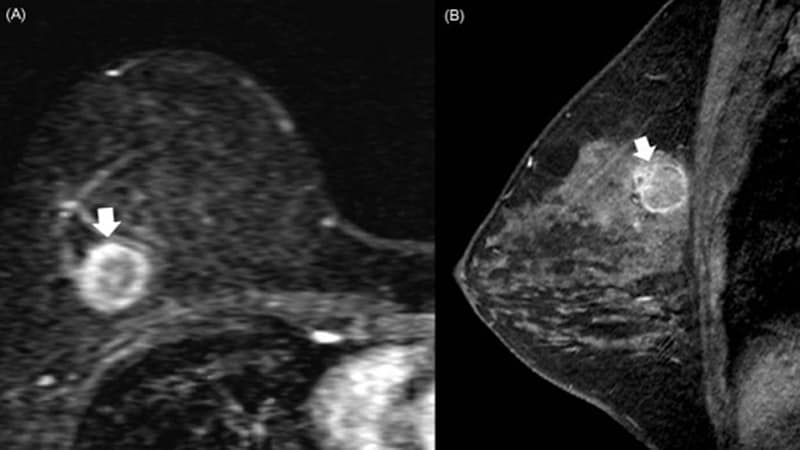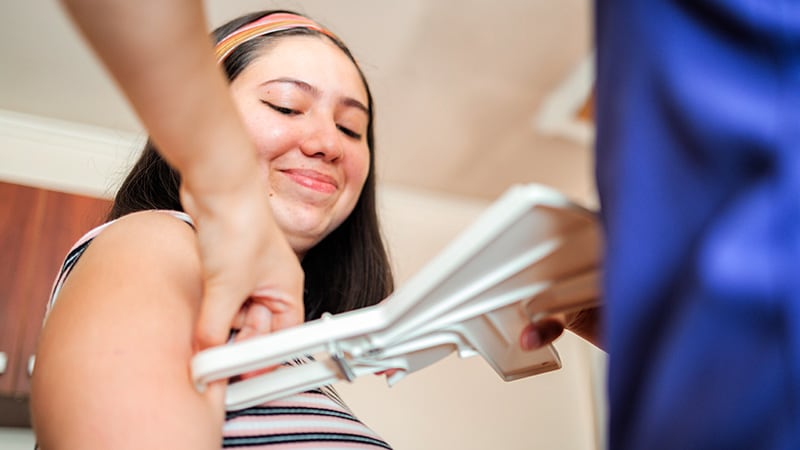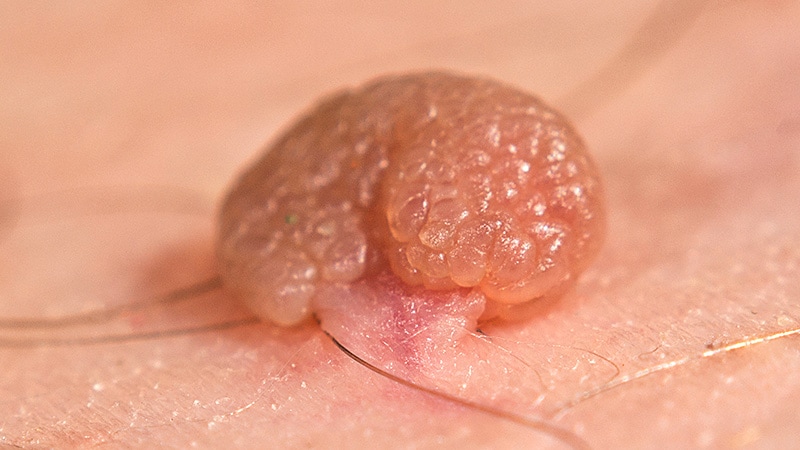LIVERPOOL, ENGLAND — An updated guideline from the British Society for Rheumatology (BSR) on the management of Sjögren disease asks rheumatologists and other clinicians caring for patients with the condition to "do the little things well" rather than overly focusing on rheumatologic treatments. The guideline's new format provides recommendations for specific clinical questions and now also includes recommendations for managing the disease in children and adolescents.
"The original guideline was published in 2017, and things move on very rapidly," consultant rheumatologist Elizabeth Price, MBBCh, PhD, said ahead of her presentation of the updated guideline at the BSR 2024 Annual Meeting.
"We approached the update in a slightly different way," said Price, who works at Great Western Hospital NHS Foundation Trust in Swindon, England. She was the chair of the new guideline's working group and convenes the BSR's Special Interest Group for Sjögren disease.
Previously, the approach was to look at the management of Sjögren disease affecting the eyes, mouth, salivary glands, and, in turn, systemic disease. "This time we posed questions that we felt needed to be asked, interrogated the literature, and then used that to come up with our recommendations," Price said.
The answers to those questions were used to form the 19 recommendations that now make up the guideline. These cover four key areas on the management of Sjögren disease: confirming the diagnosis, treating the symptoms, managing systemic disease, and considering special situations such as planned pregnancy and comorbidities. There is also lifestyle advice and information about where to get good patient education.
What's in a Name?
The BSR guideline on the management of adult and juvenile onset Sjögren disease is published in Rheumatology and is available via the BSR website, where it is accompanied by a short summary sheet.
The most notable change perhaps is the name the guideline now uses, Price said at BSR 2024. "We have been bold and called it Sjögren disease." Previously, the guideline used the term primary Sjögren's syndrome, but there has been a "move away from using eponymous syndromes and dropping s's and apostrophes," she explained.
Another significant change is that advice on managing Sjögren disease in children and adolescents is now included where appropriate, meaning that the British guideline is now the first to cover Sjögren disease "across the ages," Price said.
A pediatric/adolescent rheumatologist joined the guideline working group, which already consisted of several adult rheumatologists, ophthalmologists, and a dentistry consultant. The group now comprises 22 members total, including a general practitioner, an oncologist, a renal physician, an occupational therapist, two patients with Sjögren disease, and a librarian.
Confirming the Diagnosis
The first questions asked to help form the new recommendations were around confirming a diagnosis of Sjögren disease, such as what is the diagnostic accuracy of antinuclear antibodies (ANAs), extractable nuclear antigens (ENAs), and other novel antigens in Sjögren disease? And what is the diagnostic accuracy of salivary gland ultrasound, imaging in general, and salivary gland or lacrimal gland biopsies?
The resulting recommendations advised not to measure ANAs in the absence of clinical indicators of Sjögren disease or any other connective tissue disease but to use it to screen if there was a clinical suspicion. And ENAs should be measured even if the ANAs were negative and there is a high index of suspicion.
In terms of imaging, ultrasound of the salivary glands was thought to be useful, but other imaging was not recommended for routine practice at the current time. Minor lip but not lacrimal gland biopsies were recommended if clinical and serologic features were not enough to make a diagnosis.
Lymphoma Worries
The 2017 version of the guideline did not include information about lymphoma, but this is the thing that most patients with Sjögren disease will worry about, Price said. "They all look it up on YouTube, they all come back and tell me that they are really worried they'll develop it."
The question that was therefore posed was whether there were any measurable biomarkers that could predict the development of lymphoma in adults and children. Seven predictors were found, the strongest being a low level of complement C4 alone or together with low levels of C3. Other predictors were salivary gland enlargement, lymphadenopathy, anti-Ro/La and rheumatoid factor autoantibodies, cryoglobulinemia, monoclonal gammopathy, and a high focus score.
All of these predictors put someone in a higher risk category for lymphoma. If two or fewer of those features are present, the lifetime risk is "probably below 2%," Price said. However, if all seven are present, the lifetime risk is "approaching 100%."
The recommendation made on the basis of these findings is that people with Sjögren disease need to be offered early further investigation if they present with any new salivary gland swelling or other symptoms that might suggest the development of lymphoma. In this regard, a labial salivary gland biopsy might provide additional prognostic information.
'Do the Little Things Well'
"You have to do the little things well," Price said. "Many of the patients [who] come to see me for a second opinion have not been prescribed the right eye drops, have not been given advice on dental care," with their management taking "too much on the rheumatological treatments."
Rheumatologists are of course not trained or expected to be experts in ophthalmology or dentistry, but "you need to look at their mouth and you do need to examine their eyes, and you do need to give them some advice," Price advised.
Thankfully, that is where the updated guidelines should help, with a recommendation that people with Sjögren disease should use preservative-free eye drops every 2-3 hours.
"It's vital you avoid preservatives, because preservatives flatten the corneal surface and reduce the surface area and can cause inflammation in their own right," Price cautioned, adding that there are plenty of suitable eye drop formulations available.
In regard to helping with dry mouth symptoms, the recommendation is to use a saliva substitute for symptomatic relief. For vaginal dryness, the recommendation is to consider advising topical nonhormonal vaginal moisturizers plus estrogen creams or pessaries in peri- or postmenopausal women with significant vaginal dryness.
"Very important, however, is to maintain a neutral pH, an alkaline environment in the mouth because acid damages dental enamel," Price said. Conversely, an acidic vaginal moisturizer is needed to treat vaginal dryness.
Dental hygiene is important. Regular brushing with a fluoride-based toothpaste is advised. The use of xylitol-containing products has been shown to reduce bacteria known to increase the risk for dental decay. Telling patients not to eat between meals is also simple but important advice.
"We do recommend that patients are assessed holistically," Price said, noting that they should be offered access to cognitive-behavioral therapy and exercise therapies to help with the symptoms of fatigue and joint pain.
Watch Out for Comorbidities
Sjögren disease is associated with many comorbidities, some of which might be predicted from the age and demographics of the people who are normally affected.
"This is on the whole an older, female population, so you see a lot of osteoarthritis, gastroesophageal reflux, and hypertension," Price said. "However, you may not be aware that 1 in 5 of these patients develop thyroid disease," and there is a higher rate of celiac disease and primary biliary cholangitis than is seen in the general background population.
The recommendation, therefore, is to "be aware of and consider screening for commonly associated conditions, as guided by age and/or clinical presentation." As such, it's recommended that baseline and repeated investigations that look for signs of comorbidity are performed, such as thyroid function assessment and liver function tests, to name two.
Treatment Recommendations
As in the original guideline, the treatment of systemic disease is discussed, but the advice has been overhauled with the availability of new data.
The updated guidance notes that a trial of hydroxychloroquine for 6-12 months is the recommended treatment approach for people with fatigue and systemic symptoms.
Systemic steroids may be used in the short-term for specific indications but should not be offered routinely.
Conventional immunosuppressive or biologic drugs and immunoglobulins are not currently recommended outside of managing specific systemic complications.
In juvenile cases, the treatment of recurrent swollen parotid glands that are not due to infection or stone disease should include a short course of a nonsteroidal anti-inflammatory drug or a short course of oral steroids. This should be combined with massage followed by washouts with saline or steroids. In refractory cases, escalation to anti–B-cell–targeted therapies may be considered in select situations.
View on Updates
Patient advocate Bridget Crampton, who leads the helpline team at Sjögren's UK (formerly the British Sjögren's Syndrome Association), commented on the importance of the guidelines during a roundtable held by the BSR.
"I think it will help [patients] make better use of their own appointments. So, they'll know what treatments might be offered. They'll know what they want to talk about at their appointments," she said.
Crampton, who has lived with Sjögren disease herself for the past 20 years, added:
"I think it's important for patients that we have guidelines like this. It means that all clinicians can easily access information. My hope is that it might standardize care across the UK a little bit more."
No specific funding was received to create the guidelines, be that from any bodies in the public, commercial, or not-for-profit sectors. No conflicts of interests were expressed by any of the experts quoted in this article.

.webp) 2 weeks ago
5
2 weeks ago
5
























 English (US)
English (US)